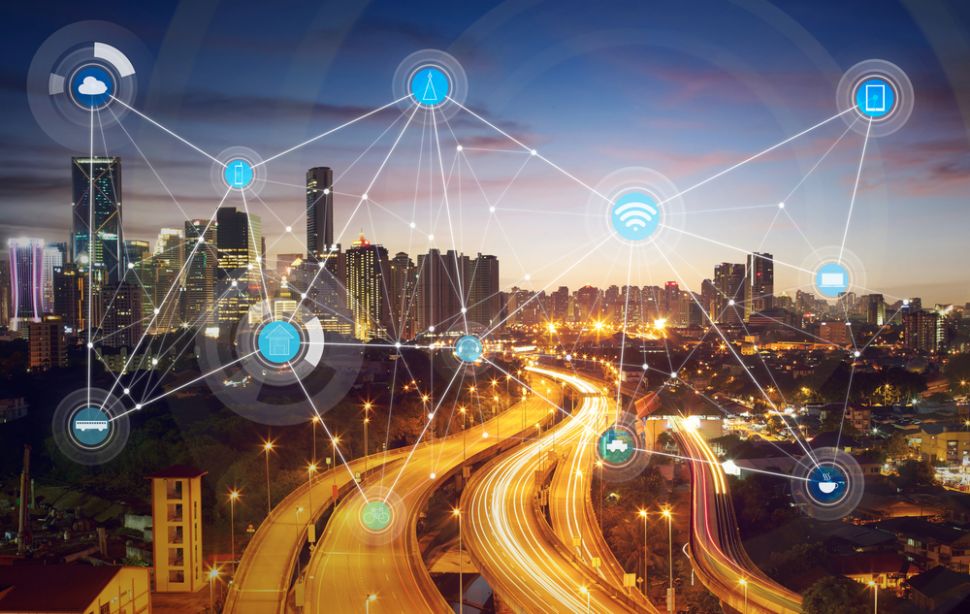Why IBM is pushing to be the driving force in the IoT
The IoT and IBM could prove to be a match made in heaven

As the Internet of Things becomes a growing presence in many industries, the need for reliable infrastructure and platforms to support the ecosystem becomes greater than ever.
Recent research estimates that the IoT market is set to reach $1.2 trillion in 2022, and IBM is looking to take advantage of this growth big time.
The company has long been one of the most recognisable names in the technology industry, and as the IoT has evolved, has greatly expanded and adapted its offerings in the space.

“We are not the hardware company of the Internet of Things - we are the data company of the Internet of Things,” Brett Greenstein, global VP of Watson IoT offerings at IBM, told TechRadar Pro.
"IoT is in a pretty broad state at the moment, and it's easy to get distracted by a lot of things,” he notes,”(but) IBM is very focused right now."
IBM recently disclosed more information on some of its most successful IoT projects around the world today, showing an impressive scale of work that spans multiple industries.
Supported by the super-smart Watson AI platform, IBM is taking inspiration from both consumer and business-facing IoT applications to push the boundaries of what can be done with the technology even further than before.
Sign up to the TechRadar Pro newsletter to get all the top news, opinion, features and guidance your business needs to succeed!
Greenstein told us about how ensuring industrial facilities such as factories or manufacturing plants has helped inspire and evolve the company’s work in the smart home space - even helping it move into healthcare and elder care.
"If you look at the market of IoT, the vast majority of growth and revenue opportunities is in the analytics, the insights, and the transformation,” he says - and this again is where Watson really shows its expertise.

The rapid growth of the IoT has led to an explosion in so-called “unstructured” data - not just typical ones and zeros from smart sensors, but information such as video, voice and other forms of input.
By setting Watson-powered systems loose on mountains of unstructured data, IBM is helping drive down the cost of organisations utilising high-quality video, allowing firms to collect more information than ever before.
But as mentioned, the IoT is also helping improve people’s lives, and IBM’s work is dead-set on pushing these initiatives forward.
"A lot of the Internet of Things...is about how it relates to the internet of people,” Greenstein says, “how people work, how they live in their homes, how they get serviced, these are all affected and improved by analytics.”
“We're trying to work out how we can get people to better relate to those things."
"With the IoT we're seeing this connection between people and things, and that's forcing us into new opportunities around the interface, which Watson helps provide, and the insights which machine learning can provide."
"In the early days of IoT, it was all about connecting things...but as soon as there were enough things in a location where regular people were, like a warehouse, manufacturing line, or even in a car or our homes, these connected things interfacing with people have brought us into new spaces."

However the explosion of data, especially when related to individuals, also needs to remain secure, and IBM is hard at work ensuring security and privacy are at the forefront of its IoT work.
Greenstein says that security and data privacy are more significant in IoT than in the internet revolution, but that many of IBM’s customers can struggle with fitting this into their plans.
"For us its fundamental,” he says, “it's very unattractive to talk about security sometimes, it's not the sexy thing to talk about, but when you really get underneath it...it's really something to consider."
IBM has worked hard to expand its existing wealth of security knowledge into the IoT space, helping not just itself but its customers too.
"Security for us is not so much just making sure that a device has the latest firmware, but really managing the infrastructure,” Greenstein says, “to make sure not just that something is built securely, but that as it evolves.”
"The real issue is that all the connected things need to be managed the same way we manage our IT infrastructure in our company”, he adds.
“Every connected device is a computer, some of them are servers, and most of them are set-and-forget...I don’t mean to make it sound so scary - it is scary, but it is solvable"
So as the world becomes smarter, it seems that blending IBM’s expertise with the huge potential opportunities offered by the IoT is a truly winning formula.
As Greenstein notes, "AI, combined with IoT, is quite magical."
- What is 5G? Check out our dedicated 5G hub!

Mike Moore is Deputy Editor at TechRadar Pro. He has worked as a B2B and B2C tech journalist for nearly a decade, including at one of the UK's leading national newspapers and fellow Future title ITProPortal, and when he's not keeping track of all the latest enterprise and workplace trends, can most likely be found watching, following or taking part in some kind of sport.